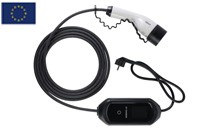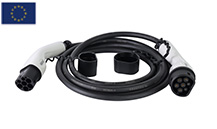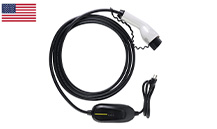There are various types of EV connectors, and different connectors can charge a car at different speeds. How do I charge my EV? Plug one end of the charger with the connector into the EV charging device, connect the other end to the EV, and follow the charging status in real time through your cell phone or the car itself.
There are only two places to charge your EV, either at home or at a public charging station. FAFA-E to understand how to choose the EV connector under these two charging methods.
1、Selecting the connector type for home charging
For home charging, AC (alternating current) connector is generally chosen, which can be used to charge EV with standard three-pin plug, but this charging method is very slow and has certain safety hazards, so it is not recommended to use. It is recommended that you install wall-mounted charging posts for charging at home.
Different types of connectors have different charging speeds.
Slow charging connectors are of type 1, type 2 and three-pin plugs, and are usually used with AC wall-mounted slow charging piles. The charging power is low and the charging speed varies according to the size of the EV battery capacity.
Fast charging units are rated at 7KW or 22KW and have Type 1 and Type 2 connectors, with Type 1 connectors having 5 pins and Type 2 connectors having 7 pins. It is worth noting that no matter how powerful the charger is, the fast charger can only charge the EV according to the maximum power accepted by the vehicle.
2、Choose the connector selection for public charging post charging
There are two kinds of charging posts, AC charging post and DC charging post, AC post is also called slow charging post and DC post is also called fast charging post. Fast charger can not be used at home, generally can only be used with the charging station charging pile. Fast chargers can be used with connectors using Type 2 43 kW and with connectors using CCS and CHAdeMO 50 kW.
Of course, the charging time also varies depending on the vehicle. Using a fast charger slows down the charging rate after the vehicle battery has been charged to 80% capacity, serving to protect the battery.
As technology continues to advance, super fast chargers with charging rates of up to 100 kW are expected to charge electric vehicles in the future to meet the needs of users for fast charging.
For the convenience of travel, FAFA-E recommends that car owners purchase a portable charger suitable for their cars. Although it takes longer to charge, it is easy to carry and has low charging requirements and low cost; it can make full use of the low power hours to charge and reduce charging cost; it can charge the battery deeply and improve the efficiency of battery charging and discharging to extend the battery life.
For those who have needs for EV chargers, EV charging cables and connectors, please contact us.






 简体中文
简体中文
